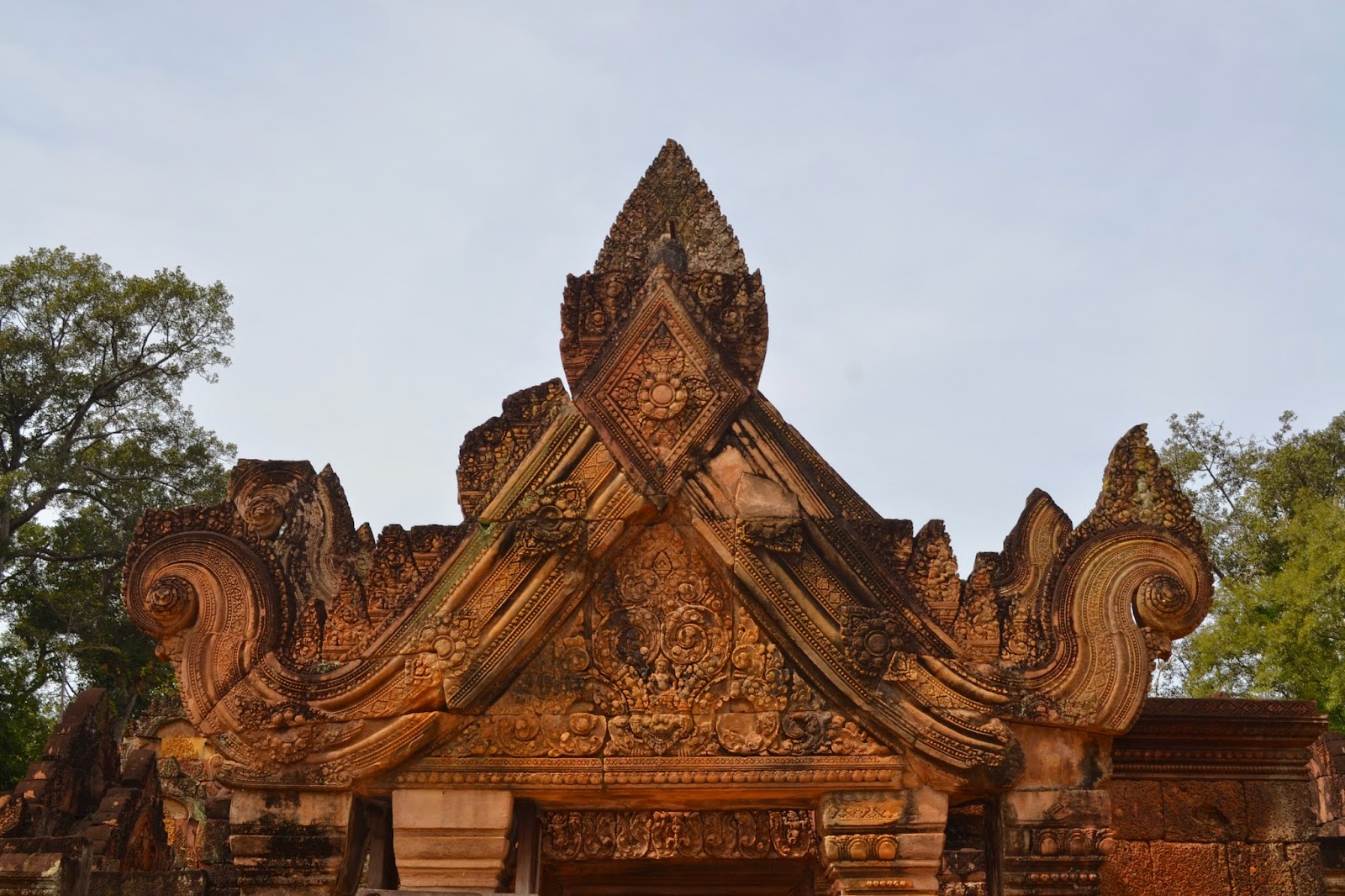We woke
up at 4:30 to see sunrise over one of the wonder of the world and biggest man
made structure in pre-industrial area, the Angkor wat. I was surprise to see
the large numbers of tourists to get a glimpse of sunrise over the temple and it
was difficult to find a place adjacent to pond filled with lotus.
Unfortunately we
were not able to get the spectacular view due to cloudy weather,
still it was amazing to see morning reflection of temple in water.
Angkor Wat was first a Hindu, later a Buddhist,
temple complex in Cambodia. It is considered as largest
religious monument in the world. The temple was built by the Khmer King
Suryavarman II in the early 12th century. Contrary to most of the temples
in Cambodia this is dedicated to Hindu god Vishnu instead of
Lord Shiva. Ankgkor wat appears on national flag of
Cambodia. The sheer scale of this temple took our breath away. We
spent 3-4 hour exploring the temple which was surely not enough.
After breakfast we continued our journey toward Ta Prohm temple .The temple of Ta Prohm became famous among tourist after it was used as a location in the film Tomb Raider.
Ta Prohm built in the Bayon style largely in the late 12th and early 13th centuries and originally called Rajavihara. Unlike most Angkorian temples, Ta Prohm has been left in much the same condition in which it was found. Trees growing out of the ruins and the jungle surroundings gives it a unique look and made it one of Angkor's most popular temples with visitors.
Our last destination before lunch break was 10th Century built The East Mebon temple.It was during the reign of King Rajendravarman, it stands on what was an artificial island at the center of the now dry East Baray reservoir.The East Mebon was dedicated to the Hindu god Shiva and honors the parents of the king.
We were very tired and decided to have some rest in afternoon before exploring preah khan and Phnom Bakheng in evening.
preah khan was built in the 12th century for King Jayavarman VII after victory over the invading Chams. It was the centre of a substantial organisation, with almost hundereds of thousand of officials and servants.This temple has been left largely unrestored, with numerous trees and other vegetation growing among the ruins. Unique thing about this temple was the structure made from circular pillars in the centre of this temple. Nowhere in the Angkor i got chance to see circular pillar.
Phnom Bakheng at Angkor, Cambodia, is a Hindu mountain temple and it is dedicated to Lord Shiva. It was built at the end of the 9th century, during the reign of King Yasovarman . Located atop a hill, it is a very popular tourist spot for sunset view.
The temple sits on a rectangular base and rises in five levels and is crowned by five main towers. One hundred four smaller towers are distributed over the lower four levels, placed so symmetrically that only 33 can be seen from the center of any side. Thirty-three is the number of gods who dwelt on Mount Meru. Phnom Bakheng's total number of towers is also significant. The center one represents the axis of the world and the 108 smaller ones represent the four lunar phases, each with 27 days. The seven levels of the monument represent the seven heavens and each terrace contains 12 towers which represent the 12-year cycle of Jupiter. According to University of Chicago scholar Paul Wheatley, it is "an astronomical calendar in stone. (Souce: wiki)
.JPG)


.JPG)
.JPG)
.JPG)





.JPG)
.JPG)


.JPG)
.JPG)


























.JPG)
.JPG)

.JPG)
.JPG)
.JPG)
.JPG)
.JPG)

.JPG)
.JPG)
.JPG)

.JPG)
.JPG)
.JPG)
.JPG)
.JPG)
.JPG)
.JPG)
.JPG)
.JPG)
.JPG)
.JPG)
.JPG)
.JPG)
.JPG)
.JPG)
.JPG)
